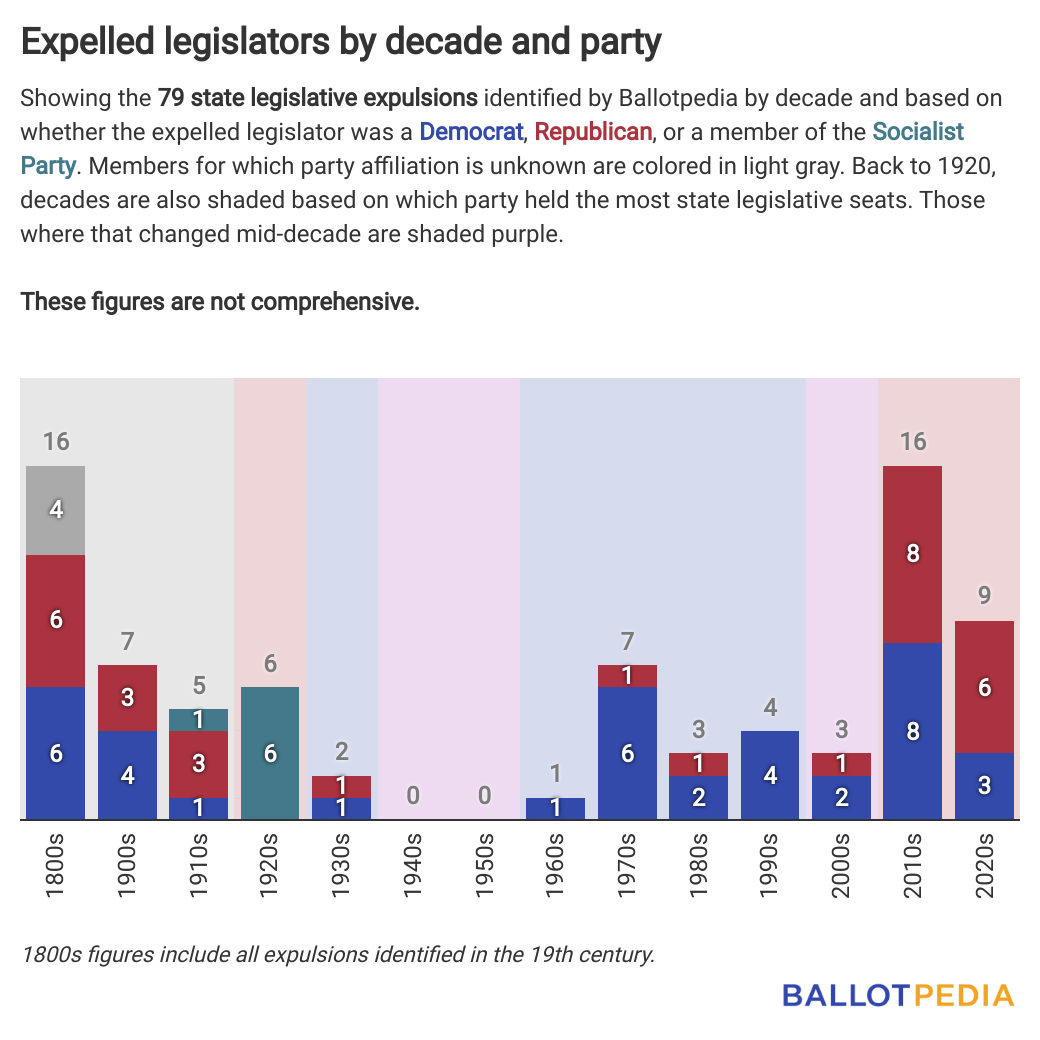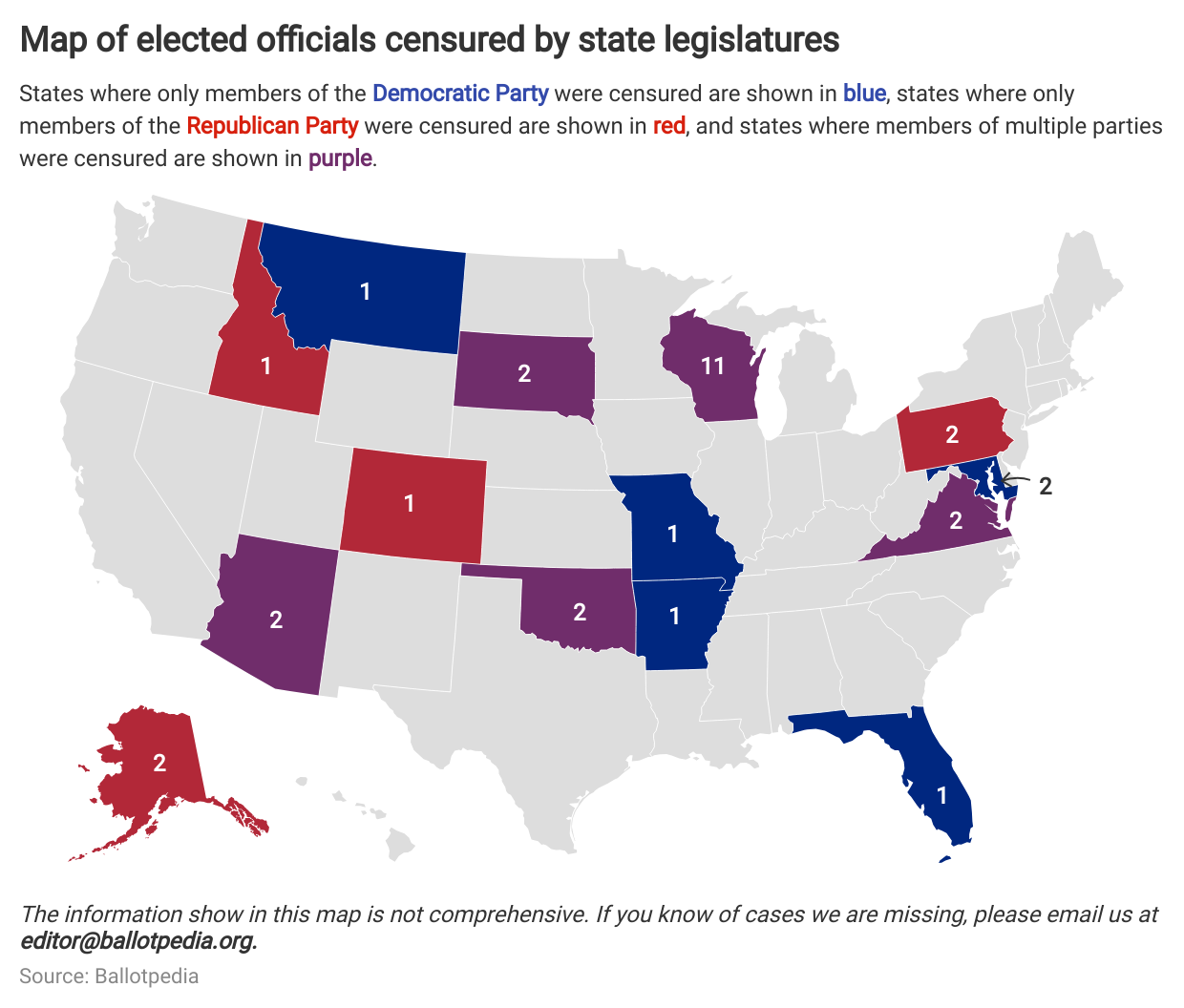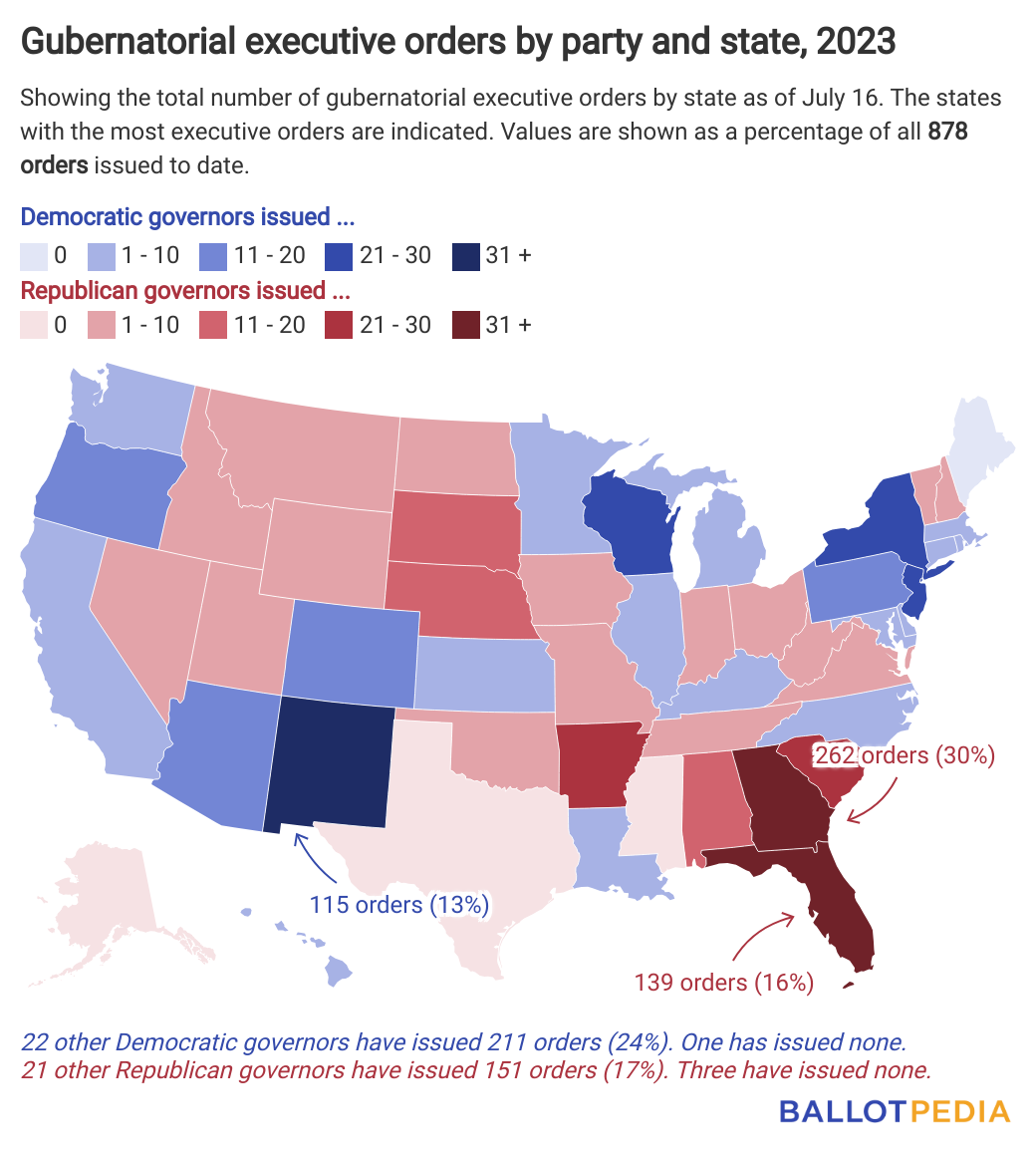
Welcome to the Thursday, July 27, Brew.
To celebrate Zenger News’s 15th Anniversary, this week, we are highlighting 15 of our favorite 2023 articles and analyses. Yesterday, we brought you five stories (in case you missed it, you can find that first batch here), and today we bring you five more. Enjoy!
Here’s what’s in store for you as you start your day:
- A look at the number of elected officials expelled from state legislatures
- A report on state legislators censured so far this year
- Keeping track of state legislative vacancies across the country
- Affirmative action-related ballot activity since 1996
- Mid-year report on gubernatorial executive orders
A look at the number of elected officials expelled from state legislatures
Less than 100 state legislators were expelled between 1813 and 2023.
Including the expulsions of Reps. Liz Harris (R-Ariz.), Justin Jones (D-Tenn.), and Justin Pearson (D-Tenn.) earlier this year, we found 28 cases of elected officials expelled from state legislatures since 2000. In 20 cases, members of the chamber in which the lawmakers served voted to expel them, and eight were removed automatically following criminal convictions under state law.
Twenty-two of the expelled lawmakers were members of their chamber’s majority party, and six were minority party members, shown below:
Looking further back, we found a total of 79 expulsions between 1813 and 2023. This includes 39 Democrats, 29 Republicans, and seven members of the Socialist Party.
Some noteworthy cases include:
- John Wilson (D), former Speaker of the Arkansas House, was expelled in 1837 after killing a colleague during a knife fight on the House floor;
- E.L. Alford (R), a member of the Texas Senate, was expelled in 1870 for resisting arrest by the body’s sergeant-at-arms;
- New York Assemblymen August Claessens, Louis Waldman, Charles Solomon, Samuel Orr, and Samuel DeWitt, all members of the Socialist Party, were expelled in 1920 for alleged disloyalty to the United States. All five were re-elected in special elections, after which the Assembly expelled Claessens, Solomon, and Waldman again.
- Sheldon Silver (D), former Speaker of the New York Assembly, was automatically expelled in 2015 after being convicted of federal corruption charges; and,
- Larry Householder (R), former Speaker of the Ohio House, was expelled in 2021 after being charged with conspiracy to participate in a racketeering scheme.

A report on state legislators censured so far this year
Besides expulsion, legislators can also censure a colleague to show disapproval.
So far this year, six legislators—three Democrats and three Republicans—were censured in five states:
- Alaska state Rep. David Eastman (R-27)
- Arizona state Rep. Stephanie Stahl Hamilton (D-21)
- Montana state Rep. Zooey Zephyr (D-100)
- Oklahoma state Rep. Mauree Turner (D-88)
- Oklahoma state Rep. Dean Davis (R-98)
- South Dakota state Sen. Julie Frye-Mueller (R-30)
We’ve found a total of 31 cases of censured officials across 14 states between 1838 and 2023. These officials include 12 Democrats, 11 Republicans, and seven members of other parties.

We’re still gathering more cases to add to our database, so if you know of any we’re missing, please email us at editor@ballotpedia.org.
Keeping track of state legislative vacancies across the country
Throughout the year, we keep track of the number of state legislative vacancies that occur across the country.
So far in 2023, there have been 85 state legislative vacancies in 33 states. That’s more than the 75 vacancies that had ocurred at this point in 2021, and below the 105 vacancies that had ocurred at this point in 2022.
Republican officials vacated 53 of those seats, while Democrats vacated 32.
Appointed replacements have or will fill 46 of the 85 vacancies. Special elections have or will be used to fill 39 vacancies.
States have various ways of filling vacancies. Twenty-five states require a special election to fill any legislative vacancy, while the other 25 states use appointments or a combination of appointments and special elections to fill them.
Here’s a closer look at the different ways states use appointment processes to fill legislative vacancies:
- In four states, the political party of the previous incumbent appoints a replacement;
- In seven states, the board of county commissioners selects a replacement;
- In nine states, the governor fills the vacancy;
- In Ohio, members of the legislative chamber with the vacancy vote to fill it; and,
- In four states, a hybrid system combines one or more of the above methods plus special elections. The exact method used typically depends on the amount of time remaining in the previous incumbent’s term.
Affirmative action-related ballot activity since 1996
Last month, the Supreme Court ruled that the affirmative action admissions programs at Harvard University and the University of North Carolina violated the Equal Protection Clause of the Fourteenth Amendment.
In light of that ruling, we looked back at affirmative action ballot measures over the past three decades.
Voters in seven states—Arizona, California, Colorado, Michigan, Nebraska, Oklahoma, and Washington—decided 10 ballot measures regarding affirmative action policies since 1996.
On eight occasions, voters decided against certain affirmative action policies. Voters decided in favor of affirmative action policies twice, once in California and once in Colorado. In both cases, voters defeated measures that would have prohibited certain aspects of such policies.

In addition to Arizona, California, Michigan, Nebraska, Oklahoma, and Washington, three other states— Florida, Idaho, and New Hampshire—had already enacted laws prohibiting race-based affirmative action in college admissions.
The Arizona Senate also approved an affirmative action-related constitutional amendment in March. It would prohibit any governmental entity from implementing an affirmative action policy regarding hiring, promoting, or admitting applicants to a school or position of employment. If the House approves the amendment, it will appear on the 2024 ballot.
Mid-year report on gubernatorial executive orders
As of July 16, governors have issued 878 executive orders since the beginning of the year.
Georgia Gov. Brian Kemp (R) has issued the most executive orders, with 262, followed by Florida Gov. Ron DeSantis (R) with 139 and New Mexico Gov. Michelle Lujan Grisham (D), with 115.
Meanwhile, governors in Alaska, Maine, Mississippi, and Texas, have not issued any executive orders.
Georgia and Florida routinely lead the country in executive orders because, unlike in most states, the governors there use orders to appoint or reappoint various offices like state boards, judgeships, and state attorney assignments.
In New Mexico, most of the 115 orders issued this year have dealt with emergency funds for natural disasters like wildfires and flooding.

Overall, Republican governors have issued 552 executive orders as of July 16, while Democratic governors have issued 326.
Governors issued 1,565 executive orders in 2022.
Produced in association with Ballotpedia







